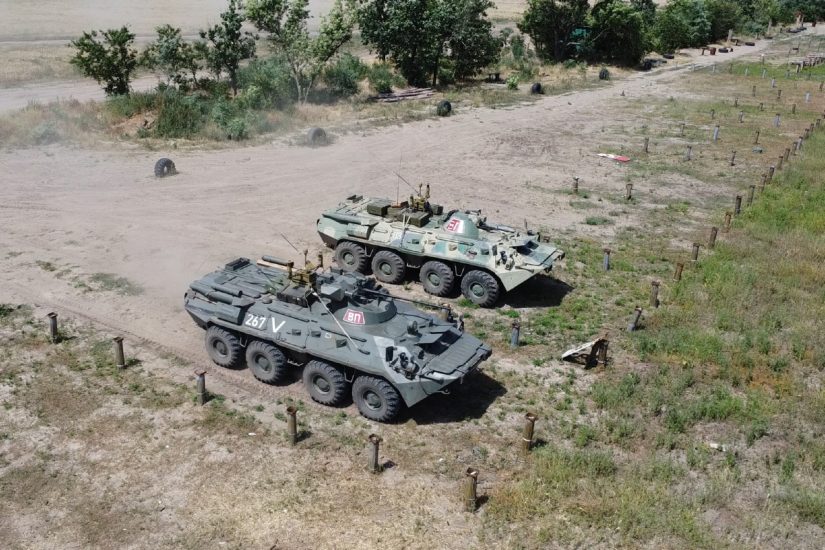A wealth of recent reports on social media – in Ukraine, Russia and elsewhere – have focused attention on an ironic development in the ongoing Russo-Ukrainian conflict: attempts by Russian troops to use existing radio jamming systems developed for different uses are being frustrated by the destructive power of Ukrainian drones that seem unaffected by the jammers.
Conflict breeds improvisation and ingenuity in the search for survival and the conflict in Ukraine is no exception. There is evidence that Russian forces are jury-rigging a counter-UAS solution by attaching RP-377 radio jammers to their vehicles, seeking to jam or otherwise disrupt the control signals of hostile drones. The problem they face is that the RP-377 – the most widely issued jammer in Russian EW brigades – is not terribly effective against the drones in daily use in the Ukrainian theatre of operations. The result – a whole spate of videos circulating on social media depicting RP-377-equipped vehicles being destroyed by a variety of FPV drones.
The device was originally developed to disrupt battlefield communications and to prevent IEDs from detonating. Effective in those roles – which explains its continued deployment with frontline units – it appears to lack the specific capabilities that would enable it to negate the destructive effect of Ukraine’s large drone fleet. A similar case applies to another jury-rigged solution adopted by Russian troops, adhering GPS jammers to their vehicles, only to see them destroyed by GPS-guided munitions.
The most likely reason for the failure, according to informed observers, is that – unlike IEDs – many drones feature frequency-hopping and agile communications capabilities, meaning that a relatively simple jammer will have much less effect on them.
It is instructive to compare this circumstance with that posited in yesterday’s post on the apparent success of Russian counter-UAS at a rather more strategic level. As in most issues in modern warfare, it is a case of ‘horses for courses’. Tools developed to do one job are very often incapable of performing another, apparently closely allied mission, no matter how much ingenuity is devoted to adapting a technology, procedure or tactic.
(Image: A Russian BTR-80 and a BTR-82A, both featuring the RP-377 jamming system. Credit: Russian MoD)
Tim Mahon is Publishing Director, Counter-UAS at Unmanned Publications




